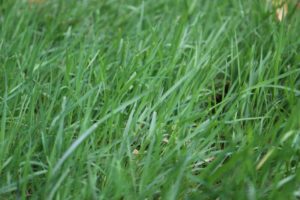Lawns & Lawn Alternatives
go.ncsu.edu/readext?761274
en Español / em Português
El inglés es el idioma de control de esta página. En la medida en que haya algún conflicto entre la traducción al inglés y la traducción, el inglés prevalece.
Al hacer clic en el enlace de traducción se activa un servicio de traducción gratuito para convertir la página al español. Al igual que con cualquier traducción por Internet, la conversión no es sensible al contexto y puede que no traduzca el texto en su significado original. NC State Extension no garantiza la exactitud del texto traducido. Por favor, tenga en cuenta que algunas aplicaciones y/o servicios pueden no funcionar como se espera cuando se traducen.
Português
Inglês é o idioma de controle desta página. Na medida que haja algum conflito entre o texto original em Inglês e a tradução, o Inglês prevalece.
Ao clicar no link de tradução, um serviço gratuito de tradução será ativado para converter a página para o Português. Como em qualquer tradução pela internet, a conversão não é sensivel ao contexto e pode não ocorrer a tradução para o significado orginal. O serviço de Extensão da Carolina do Norte (NC State Extension) não garante a exatidão do texto traduzido. Por favor, observe que algumas funções ou serviços podem não funcionar como esperado após a tradução.
English
English is the controlling language of this page. To the extent there is any conflict between the English text and the translation, English controls.
Clicking on the translation link activates a free translation service to convert the page to Spanish. As with any Internet translation, the conversion is not context-sensitive and may not translate the text to its original meaning. NC State Extension does not guarantee the accuracy of the translated text. Please note that some applications and/or services may not function as expected when translated.
Collapse ▲Please refer to the following resources for information on how to care for your lawn in the Piedmont region of North Carolina.

In the Piedmont region of North Carolina, homeowners can grow a cool- or warm-season lawn. You should choose the type of lawn you prefer and manage accordingly. View the resources below for details on growing a healthy lawn.
This chart can help you choose the right type of turf for your yard:
| Cool-Season Turf | Warm-Season Turf |
|
|
For any lawn, taking a soil test is key to keeping the lawn healthy. Watch this video for tips on soil testing. You will want to use your soil test report to calculate the amount of lime and the correct fertilizer for your yard. You may not need to apply lime every year.
If you are growing grass from seed, it is wise to choose a seed mixture with multiple cultivars of the grass you are growing. This will improve your success rate as different cultivars may grow better in various areas of your yard. Check the TurfFiles website for the latest lists of recommended cultivars for each type of turf grown in NC.
You will also want to measure your yard to know its area. You will need to know the area of your lawn to calculate how much fertilizer, lime, seed, and other products need to be applied.
A lawn requires regular maintenance. This includes mowing. At each mowing, remove 1/3 of the height or less. If you cut off too much of the blades, the grass will suffer. You also may get a buildup of thatch, which is undesirable and can reduce the health of your lawn. If you are mowing regularly, typically it is okay to leave the lawn clippings in your yard. The clippings will decay over time and return nutrients to the soil. If you are having issues with disease or weeds, especially weeds that are flowering, you may choose to bag your lawn clippings and dispose of them elsewhere.
Most lawn maintenance occurs when your lawn is actively growing. This is the time when the lawn needs fertilization and other care. Core aerification helps to loosen the soil and reduce compaction, and should also be done when the lawn is actively growing.
Resources on Lawncare
In the Piedmont, you can grow a cool- or warm-season lawn. Pick the type of lawn that best fits your needs and follow the recommended practices for establishing and maintaining it. The resources below will help you as you take care of the lawn.
- This article outlines steps for establishing a new lawn in the Piedmont.
- This article details practices for caring for an established lawn in the Piedmont.
Publications
- NC Extension Gardener Handbook, Chapter 13: Lawns
- Carolina Lawns: A Guide to Maintaining Quality Turf in the Landscape
- Tall Fescue Lawn Maintenance Calendar
- Bermudagrass Lawn Maintenance Calendar
Websites
Videos
Choosing Cool or Warm Season Grass for Your Lawn
How Much Fertilizer Should I Use for My Lawn?
Printable list of resources on lawncare.
Resources on Lawn Alternatives
Not everyone wants a traditional lawn. Please view our article on lawn alternatives for information on other options.




